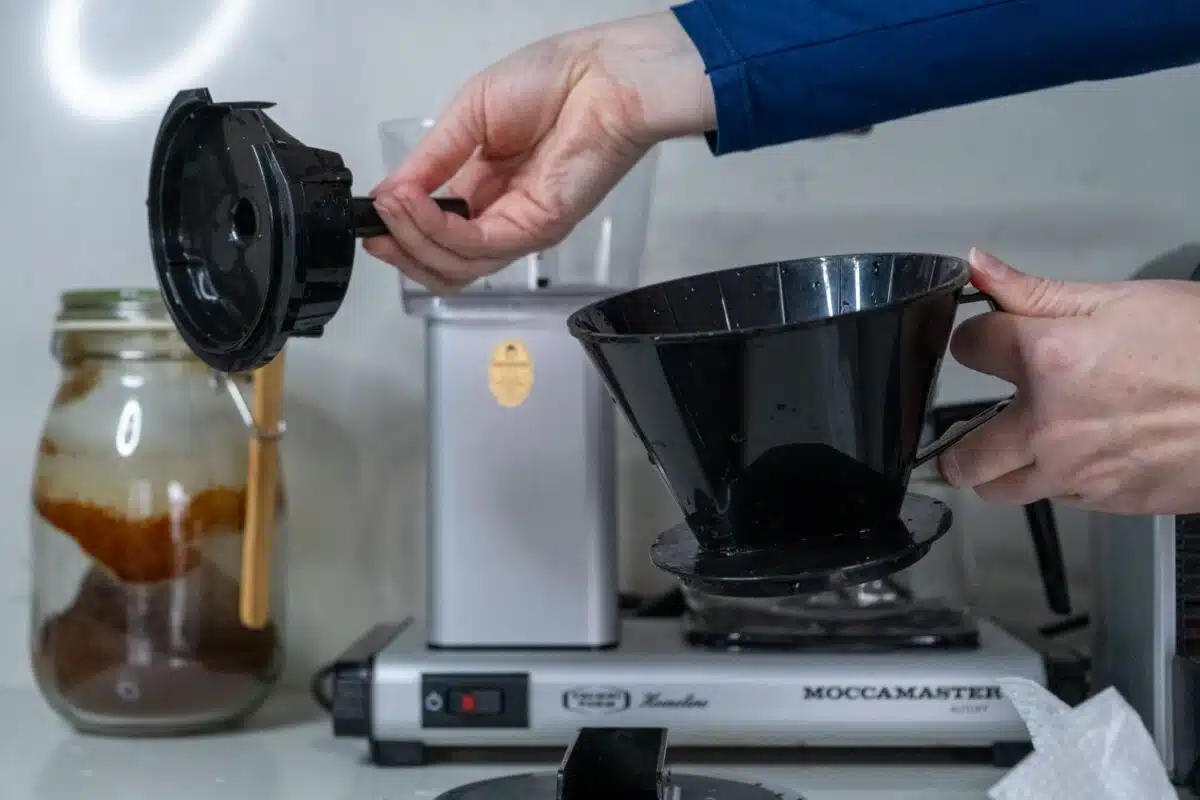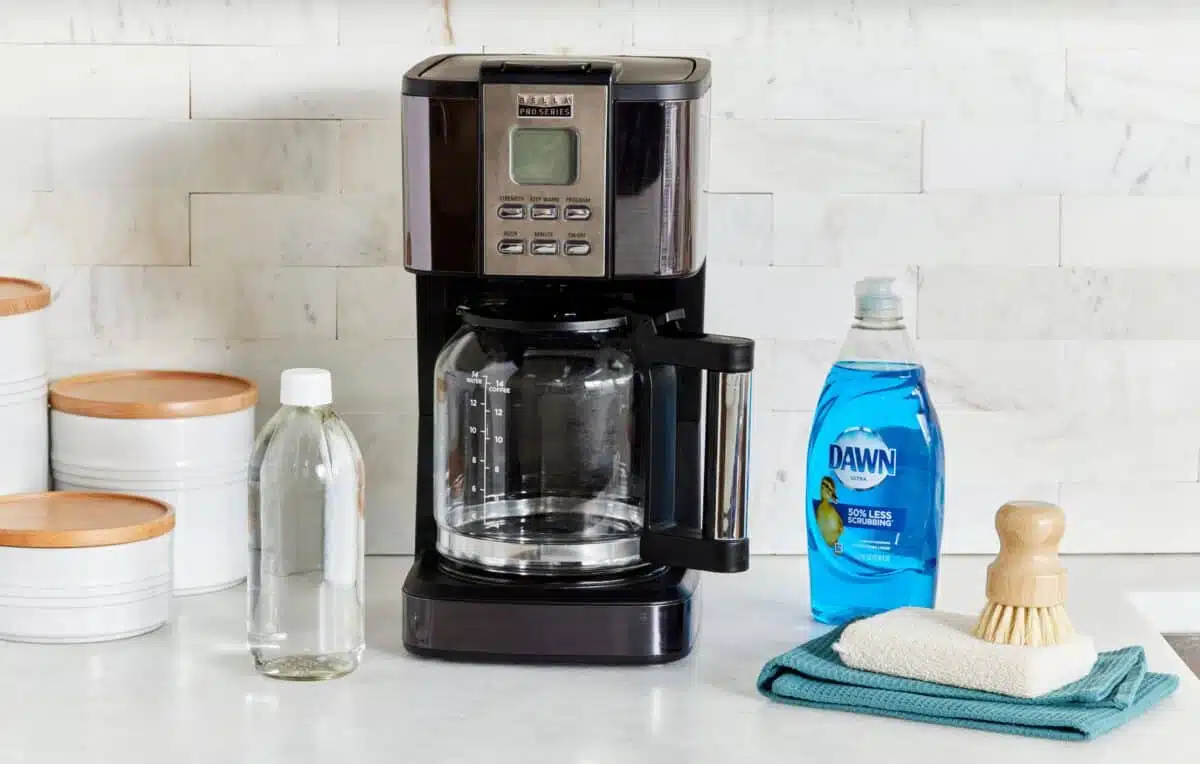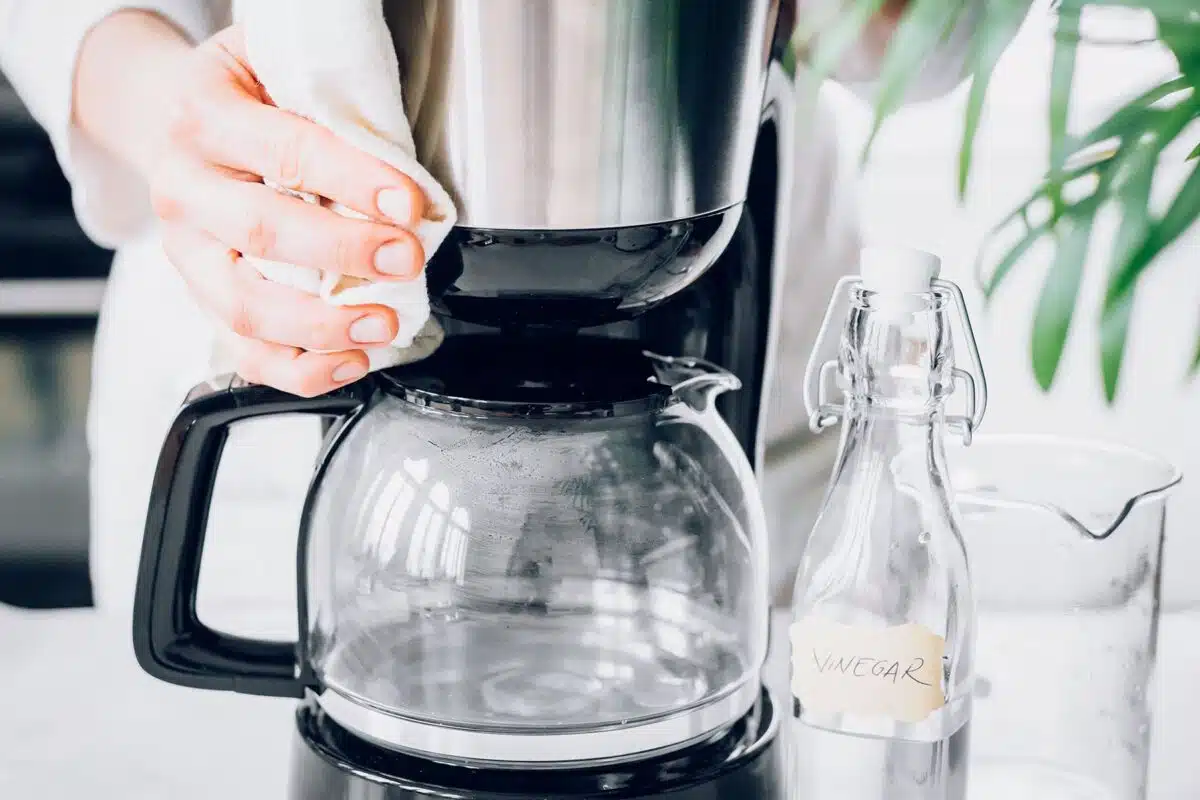Regular maintenance is key to enjoying the perfect cup of coffee, and knowing how to clean a coffee machine plays a crucial role in this process. Over time, oils and residues accumulate, which can affect the flavor and efficiency of your machine. By understanding the importance of cleaning, you can enhance the longevity of your coffee maker and ensure every brew is fresh and delicious. In this guide, we will explore the easiest ways to clean a coffee machine effectively, making your morning routine smoother and more enjoyable.
Understanding the Importance of Cleaning Your Coffee Machine
To maintain the quality of your coffee and the longevity of your machine, it’s crucial to clean a coffee machine regularly. Over time, coffee oils and residues build up, which can lead to several issues. Here are some reasons why regular cleaning is essential:
- Enhanced Flavor: A dirty coffee machine can trap stale oils, leading to bitter or rancid-tasting coffee. Regular cleaning removes these residues, ensuring a fresher brew.
- Health Considerations: Mold and bacteria can develop in unclean machines. By routinely cleaning your coffee machine, you reduce the risk of consuming harmful microorganisms.
- Optimal Functionality: Buildup in your machine can cause clogs and malfunctions. Cleaning prevents these problems, allowing your coffee maker to operate efficiently and prolonging its lifespan.
- Cost Savings: Investing time in maintenance can save you money on repairs or replacements. A well-cared-for coffee machine doesn’t just brew better coffee; it also lasts longer.
In summary, taking the time to clean a coffee machine enhances the taste of your coffee, promotes better hygiene, and saves money in the long run. It’s a simple routine that pays off greatly.
Essential Supplies for Cleaning
To effectively clean a coffee machine, gather a few essential supplies that will aid in the process. Here’s a list of items you should consider having on hand:
- White Vinegar or Commercial Descaler: Vinegar effectively removes mineral deposits, making it a popular choice for descaling. Alternatively, commercial descalers are specifically formulated for this purpose.
- Baking Soda: This versatile product can eliminate odors and stains, making it an excellent addition for overall cleaning.
- Mild Dish Soap: Use a gentle dish soap to clean the external surfaces and components of the machine without causing damage.
- Soft Cloth or Sponges: Opt for non-abrasive cloths or sponges to avoid scratching the coffee machine’s surfaces.
- Toothbrush or Cleaning Brush: These are perfect for reaching small crevices and ensuring thorough cleaning, especially in intricate areas.
- Water: Fresh, clean water is vital for rinsing any cleaning agents from the components after scrubbing.
- Coffee Filter or Cloth: For machines that use filters, having spare filters or cloths can be useful for drying or lining parts of the machine.
Collecting these supplies will simplify the process as you learn how to clean a coffee machine efficiently. Regular use of the right products will keep your coffee maker in tip-top shape, ensuring optimal performance and great-tasting brews.
Safety Precautions Before Cleaning
Before you embark on the task to clean a coffee machine, it’s crucial to take some safety precautions to protect yourself and your appliance. Here are some essential tips to consider:
- Unplug the Coffee Machine: Always disconnect your coffee machine from the power source. This prevents any risk of electrical shock during the cleaning process.
- Allow it to Cool: If you’ve just completed a brewing cycle, let the machine cool down completely. Hot surfaces can cause burns.
- Use Non-abrasive Cleaners: When selecting cleaning supplies, avoid harsh chemicals or abrasive scrubbers. Opt for natural solutions like vinegar or baking soda and soft cloths instead.
- Handle Sharp Tools with Care: If your coffee maker has removable parts that require a brush or tool for cleaning, handle these objects carefully to avoid injury.
- Check for Leaks or Damage: Inspect the machine for any signs of damage before cleaning. Broken components may cause hazards such as electric shocks or leaks.
By following these precautions, you ensure a safer cleaning experience and help maintain the longevity of your coffee machine. Remember, safety first! Now you’re ready to clean a coffee machine effectively and efficiently.

Step-by-Step Guide to Cleaning Different Types of Coffee Machines
Cleaning a coffee machine can vary based on the type you own. Each type requires specific steps to ensure you effectively remove coffee oils, mineral buildup, and other residues. Here is a quick guide tailored for three popular types of coffee machines:
1. Drip Coffee Makers
- Gather Supplies: Vinegar or a commercially available descaling solution, water, and a clean cloth.
- Descaling: Mix equal parts vinegar and water. Fill the water reservoir and run a brewing cycle, discarding the pot’s contents.
- Rinse: Refill the reservoir with water only, running another cycle to rinse out any vinegar taste.
- Clean the Pot: Dismantle and wash the coffee pot and filter basket with warm, soapy water.
2. Espresso Machines
- Supplies Needed: Espresso machine cleaner, water, and a soft cloth.
- Backflush: Use the cleaner in the portafilter and run it through the machine. Repeat with plain water to remove residues.
- Cleaning the Steam Wand: Purge steam and wipe with a damp cloth to prevent milk buildup.
- Regular Maintenance: Clean the drip tray and water reservoir frequently.
3. Single-Serve Pod Coffee Makers
- Supplies Required: Water and vinegar solution (or descaling pod).
- Descale: Place a bowl under the coffee spout. Fill the reservoir with the vinegar solution and run a brewing cycle without a pod.
- Rinse: Follow up with plain water for one or two cycles.
- Clean the Parts: Regularly wipe down the pod area and clean the drip tray.
Following these steps will help you effectively clean a coffee machine and prolong its lifespan and performance.
Daily Maintenance Tips to Keep Your Coffee Machine Clean
To clean a coffee machine daily not only enhances the coffee’s taste but prolongs the appliance’s lifespan. Here are some straightforward tips to help you clean a coffee machine effectively every day:
- Empty the Coffee Grounds: After each use, remove and dispose of used coffee grounds. Leaving them in the machine can cause mold growth.
- Rinse the Carafe: Give your coffee pot a quick rinse right after brewing. This prevents staining and eliminates residue buildup.
- Wipe Down the Exterior: Use a damp cloth to wipe the outside of your coffee machine daily. This keeps it looking fresh and removes any sticky residue from spills.
- Refrigerate Leftover Coffee: If you prefer brewing a larger batch, store leftover coffee in the fridge in an airtight container.
- Check the Water Reservoir: Daily, inspect the water reservoir for any cloudiness or residue. If needed, clean it gently with mild soap and water.
- Run a Cleaning Brew: If you use your machine daily, consider running a brew cycle with just water weekly. This helps remove mineral buildup and ensures great-tasting coffee.
Incorporating these daily habits will make it easier to clean a coffee machine and keep it performing well!
How to Remove and Clean the Coffee Pot
Cleaning the coffee pot is a crucial step in maintaining a hygienic coffee-making experience. When you clean a coffee machine, neglecting the pot can lead to the buildup of coffee stains, oils, and bacteria. Here’s how to effectively remove and clean your coffee pot:
Step-by-Step Instructions:
- Unplug the Machine: Safety first! Always unplug your coffee machine before starting the cleaning process.
- Remove the Coffee Pot: Gently lift the coffee pot from the machine. If your model has a lid, ensure to remove it as well.
- Rinse with Water: Empty any leftover coffee and give the pot a quick rinse under warm water to remove loose residue.
- Use a Mild Detergent:
- Fill the pot with warm water and add a few drops of dish soap.
- Use a soft sponge or cloth to scrub the interior and exterior, paying close attention to any stained areas.
- Tackle Stubborn Stains: For tougher spots, use a mixture of baking soda and water to create a paste. Apply it to the stains and let it sit for a few minutes before scrubbing.
- Rinse Thoroughly: After scrubbing, rinse the coffee pot thoroughly with warm water to remove all soap and residue.
- Dry Completely: Allow the coffee pot to air dry completely before reassembling it with your coffee machine.
Tips:
- Frequency: Clean your coffee pot after every use for best results.
- Descaling: Don’t forget this step when you clean a coffee machine! It is essential for machines that heat water and can impact flavor.
By following these simple steps, you’ll ensure that your coffee pot remains in top shape, contributing to a better-tasting brew every time.
Descaling Your Coffee Machine: Why and How
To clean a coffee machine effectively, descaling is essential. Over time, minerals from water build up inside the machine. This mineral deposit, known as limescale, can affect the taste of your coffee and reduce the machine’s efficiency.
Why Descale?
- Improved Taste: Limescale can alter the brewing process, resulting in bitter or off-flavored coffee.
- Extended Lifespan: Regular descaling prevents damage to internal components, prolonging the life of your coffee machine.
- Efficiency: A clean machine brews coffee faster and uses energy more efficiently.
How to Descled Your Coffee Machine
- Choose Your Descaler: Look for commercially available descaling solutions or use a mixture of equal parts water and vinegar.
- Prepare the Machine: Empty the water reservoir and ensure the coffee pot is clean.
- Mix the Solution: If using vinegar, combine it with water in the reservoir.
- Run the Cycle: Start the brew cycle and allow the solution to run through. For machines with different settings, choose the longest cycle if available.
- Rinse: After descaling, run a few cycles with plain water to eliminate any residual taste or odor.
| Descaling Method | Pros | Cons |
|---|---|---|
| Commercial Descaler | Specifically designed, fast | May be more costly |
| Vinegar | Natural, economical | Strong odor |
By understanding how and why to clean a coffee machine, particularly through descaling, you can enjoy a better coffee experience while extending the life of your appliance.

Cleaning the Water Reservoir and Filters
Regularly cleaning the water reservoir and filters is essential to ensure your coffee machine brews a delicious cup every time. When you clean a coffee machine, don’t overlook these components, as they can harbor mineral deposits and bacteria.
Steps to Clean the Water Reservoir:
- Remove the Reservoir: Gently detach the reservoir from the machine.
- Wash with Soap and Water: Use warm, soapy water to wash the inside and outside of the reservoir. A soft sponge works best.
- Rinse Thoroughly: Rinse the reservoir to remove any soap residue. Leaving soap behind can alter the taste of your coffee.
- Dry Completely: Allow the reservoir to air dry completely before reassembling it with the coffee machine.
Cleaning the Filters:
- For Permanent Filters:
- Remove the filter and rinse it under warm water.
- Soak it in a vinegar solution (1 part vinegar to 2 parts water) for about 30 minutes, then rinse thoroughly.
- For Disposable Filters:
- Simply replace them as needed. Always make sure to keep a stock handy.
Cleaning Frequency:
- Clean the water reservoir and filters every month or more frequently if you notice scaling or reduced performance.
By following these steps, you’ll efficiently maintain your coffee machine, ensuring great-tasting coffee and prolonging its life. So, next time you clean a coffee machine, remember the importance of the water reservoir and filters!
How Often Should You Clean Your Coffee Machine?
Regular maintenance is vital to ensure your coffee machine operates efficiently and brews delicious coffee. So, how often should you clean a coffee machine? Here are some guidelines to help you maintain your coffee machine effectively:
- Daily Cleaning:
- Empty and rinse the coffee pot after each use.
- Wash the brew basket and any removable parts with warm, soapy water.
- Weekly Cleaning:
- Perform a more thorough cleaning by removing all detachable components and washing them.
- Wipe down the exterior of the machine to remove any spills or stains.
- Monthly Cleaning:
- Use a mixture of equal parts water and vinegar to clean your coffee machine’s internal parts.
- Rinse thoroughly by running a couple of cycles with just water afterward.
- Descaling (every 3-6 months):
- It’s essential to descale your machine regularly to remove mineral buildup. This process involves running a descaling solution through your coffee machine.
By adhering to these cleaning schedules, you can ensure that your coffee machine stays in optimal condition, producing great-tasting coffee. In summary, to clean a coffee machine effectively, incorporate daily, weekly, monthly, and periodic descaling into your routine. This diligence not only prolongs the life of your coffee machine but also enhances your overall coffee experience.
Troubleshooting Common Issues After Cleaning
After you clean a coffee machine, you might encounter a few common issues. Don’t worry; many of these problems can be quickly resolved. Here are some troubleshooting tips to help you get back to brewing your perfect cup of coffee:
- Coffee Tastes Strange: If your coffee has an odd taste post-cleaning, it could be due to residue from cleaning agents. Ensure you use a suitable cleaning solution and rinse the machine thoroughly after cleaning.
- Inconsistent Brew Temperature: Sometimes, issues with temperature arise if parts are not reassembled correctly. Double-check your machine assembly and heating elements to ensure they are in their proper positions.
- Weak Coffee: If your coffee lacks flavor, it could be a sign that not enough coffee grounds were used, or the brewing time may be off. Adjust your coffee-to-water ratio or check the brewing cycle settings.
- Dripping Coffee Pot: If your coffee pot drips after cleaning, inspect the spout and lid for any blockages or damage. Cleaning these areas thoroughly can often resolve the issue.
- Water Leakage: This can indicate loose hoses or seals. Reassess these components and tighten them if necessary to prevent leaks.
By addressing these common post-cleaning issues, you can ensure that your coffee machine remains in optimal condition and continues to brew delicious coffee. Thus, it’s essential to regularly clean a coffee machine and keep an eye on its performance afterward.

Frequently Asked Questions
What materials do I need to clean my coffee machine effectively?
To clean your coffee machine effectively, you need a few basic materials. These include white vinegar or a commercial descaling solution, water, a soft cloth or sponge, and a toothbrush for hard-to-reach areas. Additionally, having clean, fresh water on hand for rinsing is essential. It’s recommended to avoid abrasive cleaners and scrubbing pads that could scratch the surfaces of your coffee machine.
How often should I clean my coffee machine?
You should aim to clean your coffee machine at least once a month to ensure optimal performance and taste. However, if you use it daily or brew multiple pots of coffee each day, more frequent cleaning—such as once every two weeks—may be necessary. Regular cleaning not only extends the life of the machine but also enhances the flavor of your coffee by removing residue and mineral buildup.
Can I use soap to clean my coffee machine?
While soap can be used to clean certain parts of your coffee machine, such as the carafe and filter basket, it’s important to avoid using soap on the water reservoir or the machine’s internal components. Soap can leave a residue that affects the flavor of your coffee. Instead, use a mixture of vinegar and water or a designated cleaner specifically designed for coffee machines to ensure a thorough and safe cleaning.
What steps should I follow to descale my coffee machine?
To descale your coffee machine, mix equal parts of white vinegar and water, filling the reservoir with this solution. Run a brewing cycle without coffee, allowing the vinegar mixture to pass through the system. Once done, discard the solution and run two to three cycles with clean water to flush out any remaining vinegar. For optimal results, refer to the manufacturer’s instructions specific to your coffee machine model.
Is it necessary to clean the coffee grinder as well?
Yes, it is essential to clean the coffee grinder regularly, as coffee oils and fine grounds can build up and affect the flavor of your coffee and the performance of the grinder. Depending on usage, aim to clean it monthly by using a soft brush to remove grounds and wiping surfaces with a damp cloth. For deeper cleaning, consider running a small batch of dry white rice through the grinder, which can absorb oils and help break down residue.

